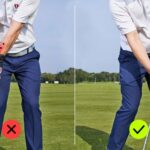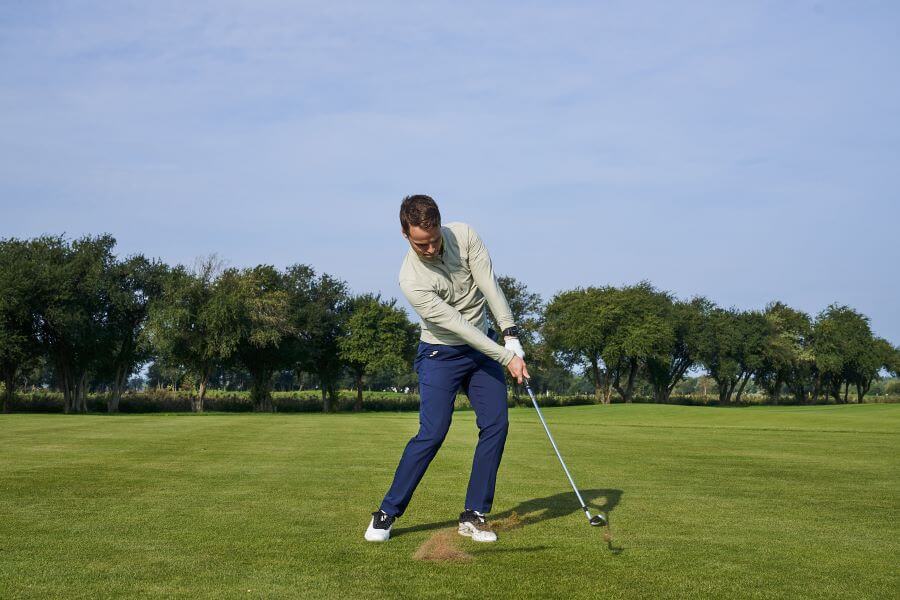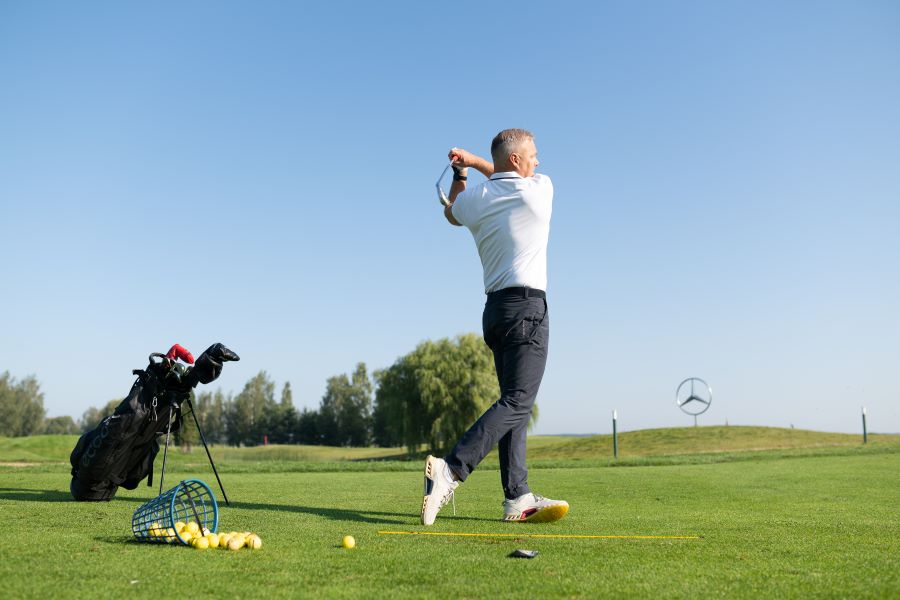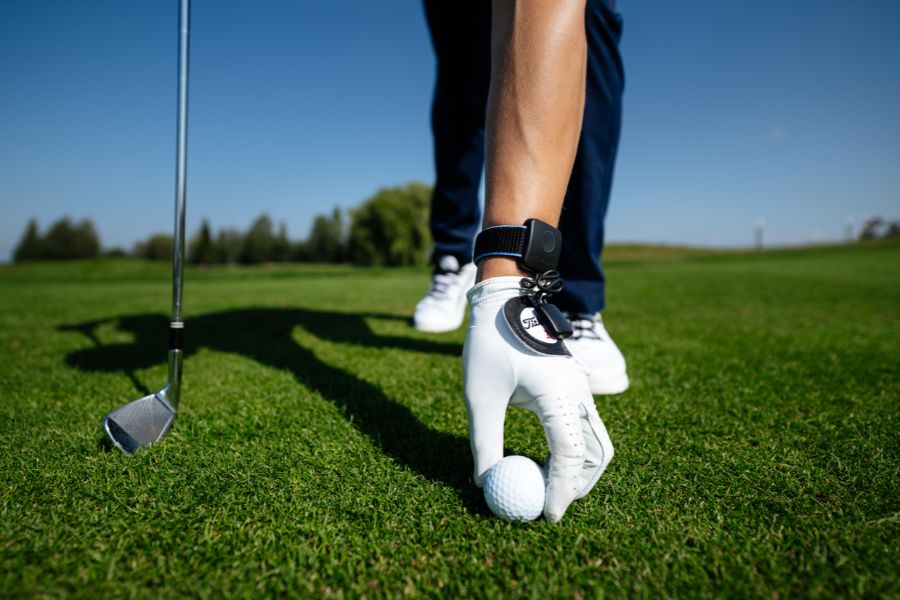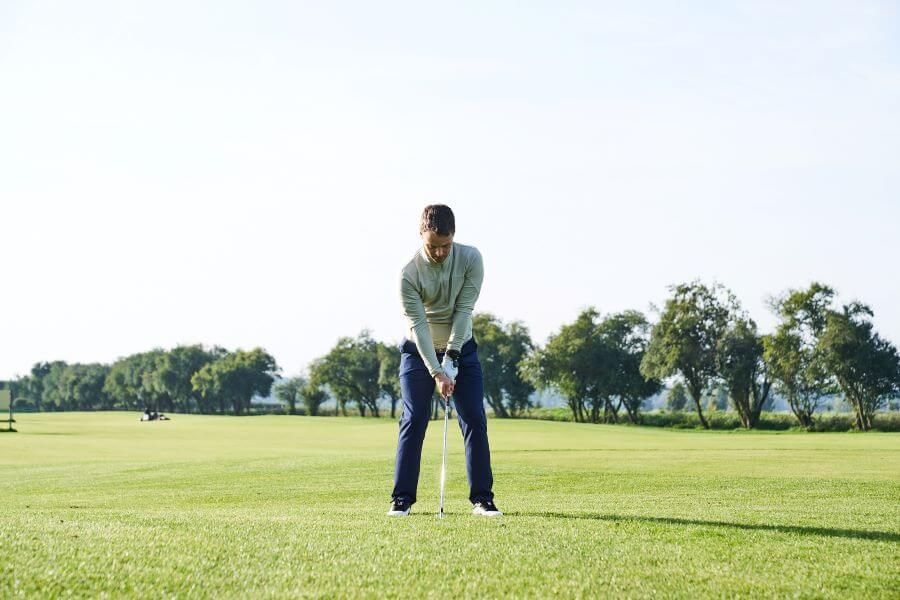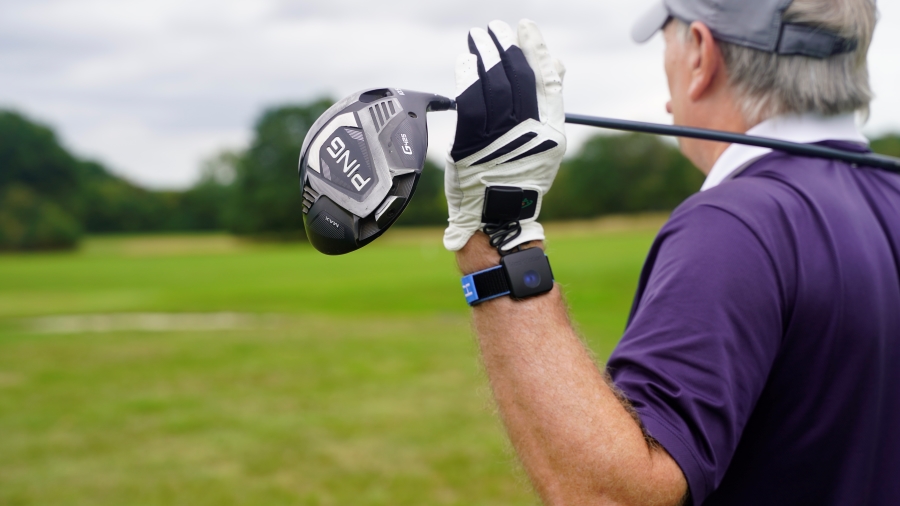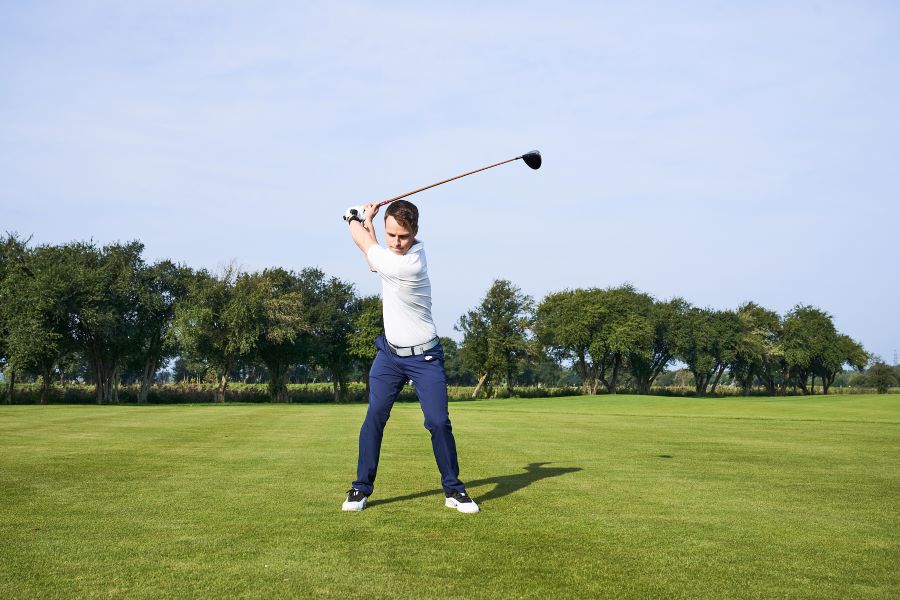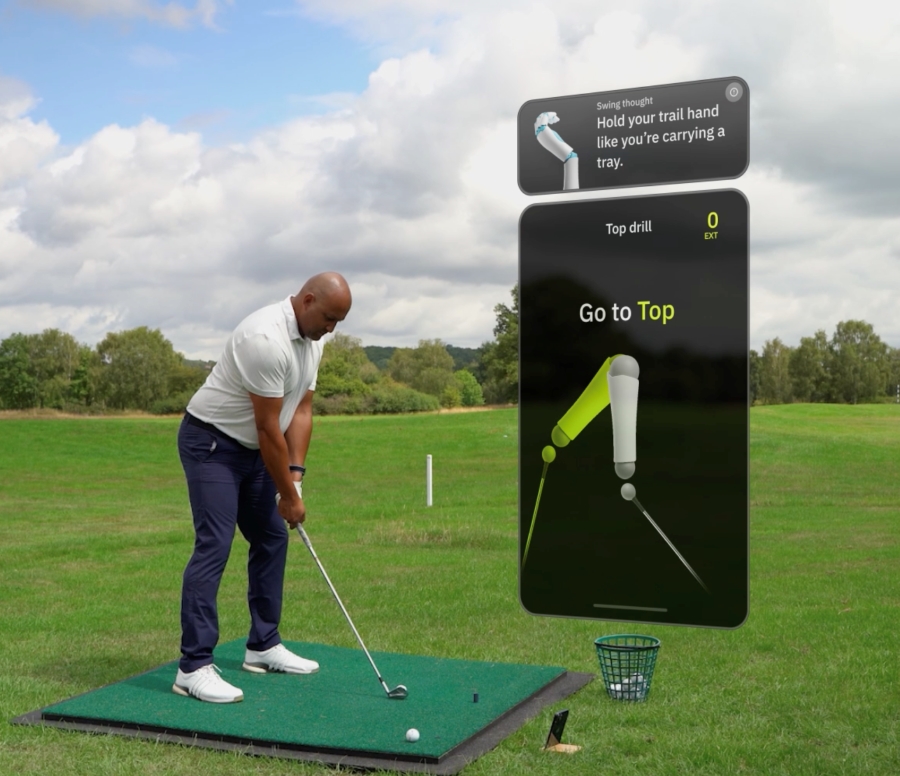How Your Grip Affects the Golf Swing (And Why Neutral Isn’t Always Best)
Most golfers think of the grip as a setup fundamental. One that’s boring to practice.
But your grip influences far more than how your hands sit on the club. It shapes your wrist mechanics, your ability to square the face, your release pattern, and even the overall shape of your swing.
There are plenty of misconceptions about the way the grip works, how it should sit in your hands, and more. Let’s take a look at how your grip affects your golf swing and if this could be why you’re struggling.
How Grip Affects the Golf Swing (Key Takeaways)
- HackMotion wrist ranges are not universal. Your wrist angles will look different depending on your grip.
- Strong, weak, and neutral grips all create different wrist baselines. A strong-grip golfer will not match the same numbers as a weak-grip golfer and shouldn’t try to.
- Comparing your data to a Tour pro with a different grip won’t give you meaningful feedback. Mismatched grips = mismatched wrist positions, even with a functional swing.
- The “textbook” neutral grip isn’t automatically the best choice. Many golfers aren’t built for it based on wrist mobility, forearm rotation, and natural tendencies.
- HackMotion helps you understand your own functional pattern. It doesn’t force one grip style; it shows how your grip affects your wrist motion and how consistently you can repeat it.
Contents
- Why Grip Matters More Than Most Golfers Realize
- Neutral, Strong, and Weak Grips (What They Actually Do)
- Neutral Grip: The Standard Starting Point (But Not Always the Best Choice)
- Strong Grip: More Help Closing the Clubface
- Weak Grip: More Loft, Higher Flight, and Fade Bias
- Why the “Perfect Grip” Isn’t What You Think
- How to Find Your Best Grip
- How HackMotion Fits Into Grip Training
- Final Thoughts
Why Grip Matters More Than Most Golfers Realize
Your grip influences:
- How easily the clubface can open or close.
- How the wrists flex, extend, and rotate.
- How steep or shallow your swing becomes.
- How naturally you can produce your preferred shot shape.
- Whether your release pattern requires timing or feels automatic.
And here’s the most important reminder: There is no single perfect golf grip.
There is only the grip that works for your body and produces a consistent clubface angle at impact. Tour players prove this every week. Some use neutral grips, some very strong, some noticeably weak, and all are world-class ball strikers.
The key is matching your grip to your natural delivery, not to a picture in a book.
If you want a simple walkthrough of proper hand placement, check out our guide on how to grip a golf club.
Neutral, Strong, and Weak Grips (What They Actually Do)
Below is a simple, clean table to help visualize how each grip influences the swing.
| Grip Type | Clubface Tendency | Wrist Motion Needed | Swing Effect | Ideal For |
|---|---|---|---|---|
| Neutral | Balanced (not biased open/closed) | Moderate flexion/rotation | Neutral plane, natural release | Golfers who already deliver a square face |
| Strong | Prefers to close | More flexion to avoid shutting the face too much | Often shallower, easier to square | Golfers who slice or leave the face open |
| Weak | Prefers to open | More rotation + flexion through impact | Often steeper, higher launch | Golfers who hook or over-close the face |
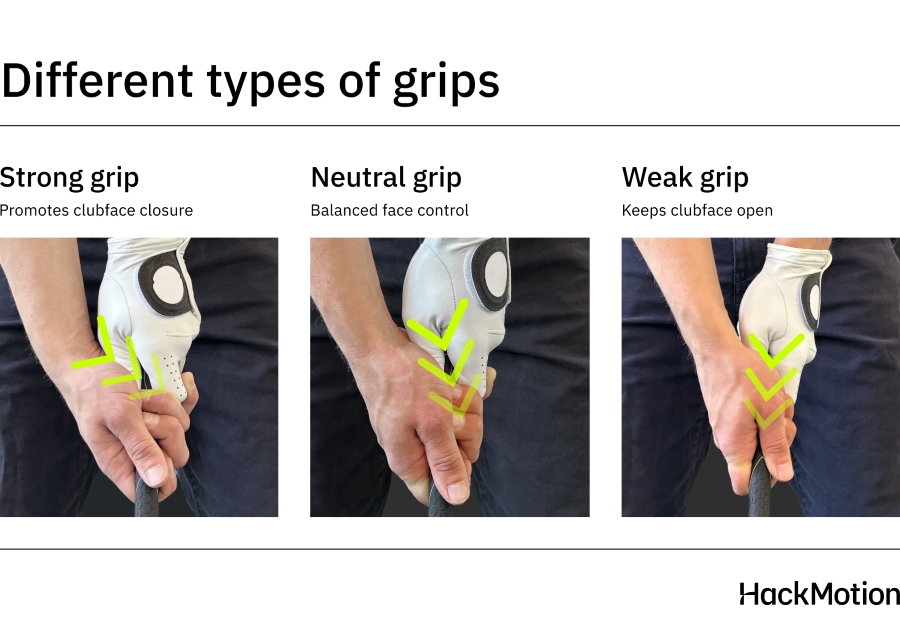
Neutral Grip: The Standard Starting Point (But Not Always the Best Choice)
A neutral grip is often taught as the “correct” grip, but it’s only correct if it matches your body and natural delivery.
For some golfers, a neutral grip produces a square clubface. For others, it leads to either a push or a hook because their wrist mobility doesn’t match the position.
How it Typically Affects the Swing
- Clubface stays balanced
- Wrist mechanics feel predictable
- Ball flight is easier to shape both ways
What a Neutral Grip Looks Like
A neutral grip generally places both palms facing each other with the forearms in their natural mid-range of rotation.
For most golfers, this means:
- The lead hand shows 2–2.5 knuckles at address
- The trail hand sits more under the club than on top
- Both thumbs run slightly down the center of the shaft
- The clubface starts in a naturally square position
- Wrist motions feel balanced, not biased toward opening or closing the face
A neutral grip doesn’t guarantee a square clubface, but it provides a balanced starting point without strong tendencies in either direction.
Strong Grip: More Help Closing the Clubface
A strong grip rotates both hands toward the trail side. This increases your ability to close the clubface and reduces your ability to open it.
How it Typically Affects the Swing
- Easier to square or draw the ball
- Less rotation is needed through impact
- Often encourages a shallower delivery
- Can reduce the delivered loft if overdone
What a Strong Grip Looks Like
A strong grip rotates both hands toward the trail side (right for a right-handed golfer). In most golfers, this creates clear visual markers:
- The lead hand shows 3–4 knuckles at address
- The “V” formed by the thumb and index finger on both hands points toward the trail shoulder
- The trail hand sits more underneath the grip, supporting the club from below
- The clubface feels easier to close, even without much wrist rotation
- The lead wrist often starts with more extension at setup
Weak Grip: More Loft, Higher Flight, and Fade Bias
A weak grip rotates both hands toward the target. This reduces your ability to close the face and makes opening the face easier.
How it Typically Affects the Swing
- Encourages higher launch
- Opens the face more easily
- Increases the need for rotation
- Can steepen the shaft
What a Weak Grip Looks Like
A weak grip rotates both hands toward the target (left for a right-handed golfer). This shifts the hands into a more open-faced starting position and typically looks like:
- The lead hand shows 0–1 knuckles at address
- The “V” formed by the thumb and index finger on both hands points closer to the lead shoulder
- The trail hand sits more on top of the grip instead of underneath
- The clubface feels easier to open and harder to close
- The lead wrist often starts with more flexion at setup
Want a clearer comparison of each grip style? Read our breakdown of strong vs. weak grips in golf.
Why the “Perfect Grip” Isn’t What You Think
Many golfers chase a neutral grip because it’s what they’ve always been shown. But perfect grips don’t exist. Functional grips do.
Your best grip is the one that:
- Matches your body and mobility
- Produces your preferred ball flight
- Squares the clubface reliably
- Doesn’t require complicated compensations
- Can be repeated swing after swing
HackMotion simply helps you measure how consistent that pattern is.
How to Find Your Best Grip
One of the simplest ways to identify the grip that works best for your swing is to test the extremes and then work back toward the middle.
This helps you feel how each grip changes the clubface and makes it easy to find the range where your ball flight becomes the most consistent.
Here’s the process:
- Test a very strong grip. Hit a few shots and notice how easily the face closes.
- Test a very weak grip. Hit a few shots and pay attention to how long the face stays open.
- Work back toward the middle. Your most reliable ball flight usually appears between these two extremes.
- Use HackMotion to confirm your pattern. Check for consistency in:
– Set up wrist position
– Top-of-backswing wrist position
– Delivery and release pattern
Your ideal grip is the one that produces the most repeatable wrist motion and the most predictable clubface delivery, not the one that looks the most neutral.
How HackMotion Fits Into Grip Training
HackMotion doesn’t teach one specific grip; it teaches clarity.
It helps you understand how your grip influences your wrist angles, how those wrist angles affect the clubface, and whether you’re repeating the same pattern from swing to swing.
It also shows where your delivery becomes inconsistent and how even small grip adjustments immediately change your wrist motion.
Once you know what your grip does, you can finally build a swing that works with it, not against it.
If you’d like help matching your grip to the correct setup, here’s our guide to a solid wrist position at address.
Final Thoughts
Your grip has a direct impact on your wrist mechanics, your ability to square the clubface, and your overall ball flight. But the goal isn’t to force yourself into a neutral or textbook position. The goal is to find a grip that fits your body, matches your natural delivery, and helps you control the clubface.
Use HackMotion to measure grip consistency and to check and ensure that any grip changes are still allowing you to square your clubface through impact.





